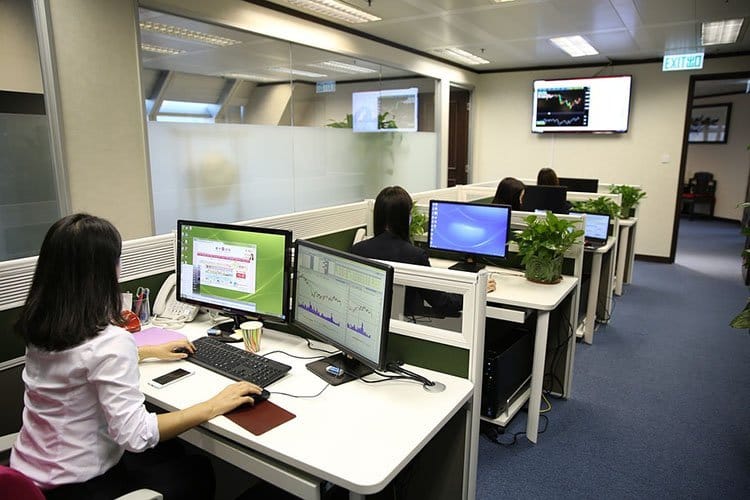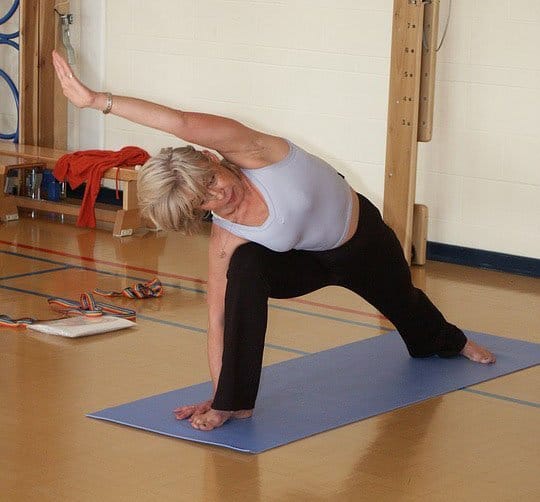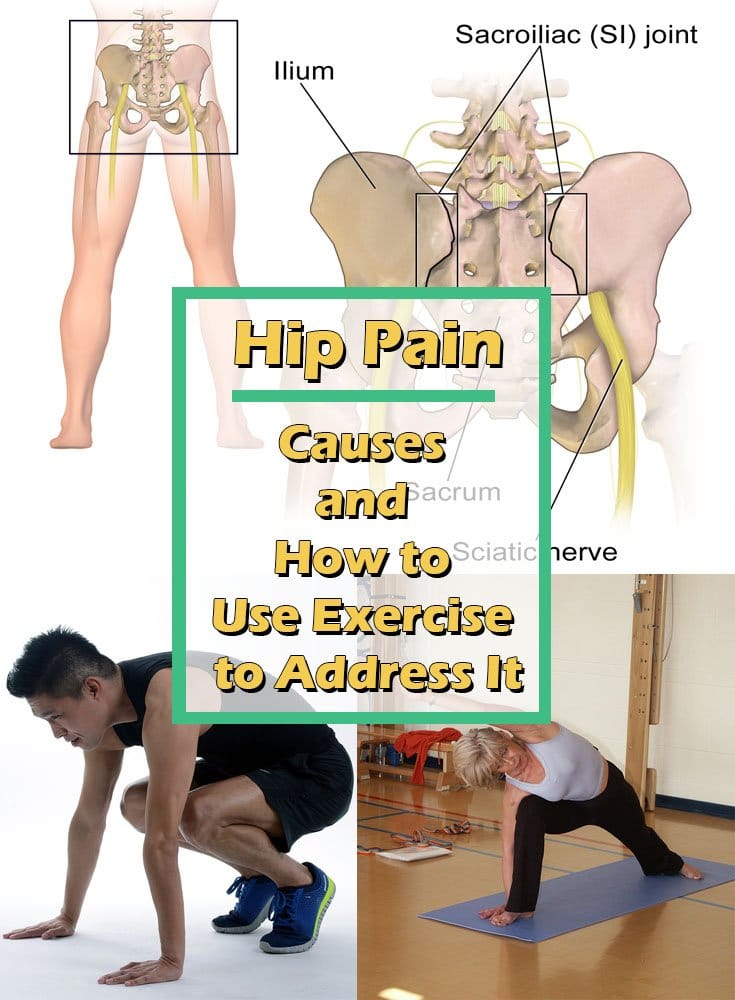Hip pain is a common complaint that can be caused by a wide variety of problems. It is a common problem for both sedentary and non-sedentary individuals and even small injuries in or around the hip can cause significant pain and loss of function. While last time we had a chance to present exercises to prevent sciatic nerve pain, today we delve deeper into hip pain and how to use exercise to address it in the long run.
Chronic pain is most often a sign that there is irritation or injury at a site. Hip pain can be caused by a multitude of conditions, from trochanteric bursitis to osteoarthritis. The great news is that movement is the cure for many of these conditions.
When assessing an injury, we talk first about the mechanism of the injury, or simply, describing the condition(s) that led to it. By understanding the mechanism of it, we better understand the injury itself and how to use exercise to heal it, not harm it further.
The 3 Common Causes for Hip Pain
Here are three common causes of hip pain:
1. Chronic Sitting

The average American sits 13 hours a day which causes an imbalance of the hip musculature. The hip flexors remain in a shortened position, while the glutes and deep hip rotators remain elongated. When we add chronic dehydration, the result is tissue that more closely resembles beef jerky than a healthy muscle tissue.
This tissue lacks the necessary flexibility and elasticity to allow for smooth and efficient movement. It tears more easily and becomes overstressed more easily, and the rigidity of the tissue leads to more rubbing against bone and bursae.
2. Strength Imbalance
A strength imbalance occurs most often when one’s exercise regimen is consistent and unvaried like with most runners. Whether running 10 miles a week or 40 miles per week, runners often feel like they don’t need more or different exercise. The repetition of the same movement without variation builds strength in some muscles, while neglecting others. This imbalance puts an unnatural amount of strain on those muscles, resulting in overuse injury. This type of injury is often found at the tendinous origins in the pelvic complex.
3. Skeletal Imbalance
Skeletal imbalance refers to the uneven stature or movement pattern that many people demonstrate which can be caused by things like old injuries and leg-length discrepancies. When movements are not even or balanced bilaterally, one side will be the victim of added pressure, tissue friction or workload. These people often fall victim to conditions such as bursitis or piriformis syndrome.
Fortunately, the fix for many of these hip issues can be found in the right movements.
How to Fix Mobility
The best fix for immobility is mobility. Focus on improving range of motion of the hip flexors and hip rotators with gentle dynamic movement. For example, consider adding a bodyweight squat and lunge series to your warm-ups:
| Individual | Bodyweight Squat Variation | Bodyweight Lunge Variation | Bodyweight Deep Hip Opener |
| Healthy and strong | Wide, deep squat | Walking lunges | Walking lunge with contralateral Rotation |
| Healthy intermediate | Wide squat | Walking lunges or split-stance squat | Suspension trainer deep squats |
| New or older exerciser | Suspension trainer and/or box squat | Modified split-stance squat | Body-weight deadlift |
| Injured exerciser | Pain-free: suspension trainer and/or box squat | Pain-free: split-stance squat | Pain-free: Body-weight deadlift |
How to Fix Elasticity

Improving the elasticity of that beef jerky-like tissue is best achieved through a combination of homework and loaded movement training. 2 to 3 hours of movement each week is not enough to undo 100+ hours of inactivity each week—you must move more often. Let your homework assignment look something like this:
| Daily | Static stretch shortened muscle tissue for more than a minute at least once daily. |
| Hourly | Stand up and perform 10 bodyweight squats or chair sits every hour to get the muscles working and moving. |
| Nutrition | Drink water all day. If you are well-hydrated, the hourly movement will pull water into the muscles, turning the jerky back into elastic tissue. |
Loaded movement training can be used to train the elastic nature of the connective tissue. A medicine ball reverse wood chop, for example, is a great way to get the hips moving in all three planes with one movement. For variety, change up the tempo. If you are in the first phase of rehab or hip injury, consider using the ViPR tilt, which can be performed while in parallel or staggered stance, or single-leg with the ViPR on its edge.
How to Fix Strength

Never underestimate the importance of pure strength. Improving the overall strength of deadlifts and squats can be a great contributor to regaining skeletal balance and achieving strength balance. Always work pain-free and build the coordinated strength of squats and deadlifts over time. Getting back to basics is often the best medicine.
With any injury, use pain as your guide. If a movement hurts, don’t continue.
Light Exercises for Hip Pain: Working Out at Home
Here are additional exercises that can be done on a daily basis if you are in no condition to use heavier exercises or weights. Start with the first exercise and work up to the other variations. These movements are designed to be relaxing, not strenuous:
- Lie on your back with your knees bent and your feet flat on the floor. Squeeze your gluteal muscles by tightening the cheeks of your buttocks. Hold for five seconds and then release, being sure to breathe while you do it. Work up to 30 repetitions per session;
- Lie on your back with your knees bent and your feet flat on the floor. Tighten the muscles in your buttocks, then lift your hips off the ground and hold for about five seconds before slowly lowering yourself back down. Be sure to breathe throughout the exercise. As with the first exercise, you can work up to doing 30 repetitions, resting for a few seconds (or longer) between each. If you start to get tired, stop and rest for a couple of minutes;
- Lie on your back with your knees bent and your feet flat on the floor. Tighten your buttocks and lift your hips off the floor. Tighten your abdominal muscles and lift one foot a couple of inches off the floor. Then put it down and lift the other foot a couple of inches, all while remembering to breathe. Work up to doing 30 steps at a time.


